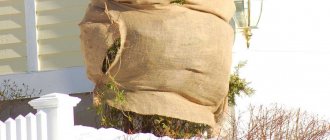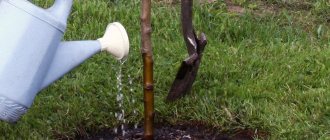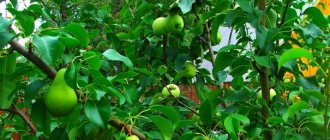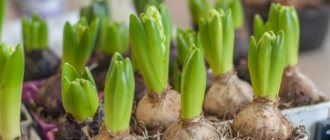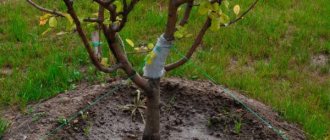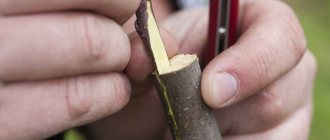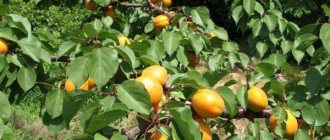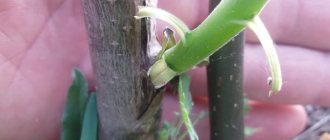Features of winter vaccination
To quickly obtain a strong seedling of a varietal crop, grafting is used in the winter months. Before the actual procedure, gardeners prepare grafting material. All work is performed in a warm room in comfortable conditions, and not outside. Therefore, such plant grafting is also called home or table grafting.
Plant shrubs and any fruit crops in winter. But you need to take into account that especially capricious varieties have low survival rates. Grapes, apple trees or pears do not cause problems, but certain varieties of cherries take root very difficult.
Possible storage problems
The most common reason for material deterioration is their freezing, which can occur when stored in a place with a low temperature: a thin layer of sawdust or snow, a shallow trench, storage in a freezer, or in a bottle outside. Frozen branches have a watery, glossy appearance. To avoid freezing, it is necessary to protect the cuttings with a thick layer of snow or sawdust (at least 30 cm). If they are stored in a cellar, it is necessary to monitor the thermometer readings. Do not store in the freezer or refrigerator under any circumstances.
Benefits of grafting in winter
Winter is a relatively quiet period for gardeners. During this period, all garden chores have already been completed, and the harvested crop has been processed. Therefore, it is possible to carry out some of the necessary spring work right at home in comfortable conditions. The eyes grafted at this time by budding show a high degree of survival and do not die from frost. In addition, this method of grafting significantly accelerates the growth of seedlings. By autumn they grow large and strong enough to be transplanted to a permanent location.
Why graft an apple tree in winter?
To obtain a seedling of a specific variety, you do not need to wait for the onset of spring, but you can graft in the winter and then grow the resulting seedlings in a greenhouse or using large containers. The main advantage of winter grafting is the absence of the negative influence of high temperatures and the ideal condition of the rootstock and scion.
Thanks to these advantages, it is winter grafting that allows you to obtain apple tree seedlings with excellent characteristics. Using grafting in winter, you can obtain seedlings with intensive growth of the above-ground parts and root system. And by the next autumn season, such seedlings grow sufficiently developed so that they can be planted in a permanent place. We wrote in more detail about planting seedlings in the article on how to properly plant an apple tree seedling.
Preparation of material for grafting
Depending on the climatic conditions of the region, work on winter grafting of plants begins at the end of December or in January. This procedure is completed with the arrival of spring and the establishment of warmer weather. But the preparatory work is carried out much earlier. Experienced gardeners take care of the preparation of scions and rootstocks in the fall. This is usually done in October or the first days of November. Before the main work is carried out, the prepared material is stored in special conditions.
Preparation of rootstocks
Only strong young plants are selected as rootstock for home grafting. After all, the height and durability of a new tree or bush, as well as the number of fruits, depend on this. According to the method of cultivation, they are either seed or vegetative. In the first case, seedlings were grown from seeds, and in the second, they were rooted from cuttings.
Specimens 1-2 years old or grown clonal plants are dug up before frost arrives in October. Select specimens with well-developed roots and a trunk thickness of more than 7 mm. They are shortened to a length of 30 cm. The rootstocks prepared in this way are placed in boxes and sprinkled with a moistened mass of sand and sawdust. Then the containers are transferred to a darkened room with an air temperature of 0 to +3 degrees. The ideal option in this case is a basement or cellar.
Important!
You should not store the prepared material in the snow. Unstable weather often causes the snowpack to melt due to a thaw, only to be suddenly hit by frost. In such circumstances, rootstocks and cuttings often die.
Preparation of scions
Scion cuttings are also prepared in the fall, before the onset of the first frost. They are cut from the top shoots of trees of a suitable variety. Cuttings are made within 10-15 cm in length with 2-3 live buds. If you plan to graft several varieties or varieties, the scions are collected in separate bundles and a tag with the name is attached.
Before starting work, the cuttings are placed in a box with moistened sand in a vertical or slightly inclined position, with the lower part buried by a third. Another storage option is to place the cuttings in film and tie them up. Scions are stored together with rootstocks in a basement or cellar.
Preparation of cuttings for scion
You can cut cuttings for grafting in your own garden, exchange with collectors, or purchase in specialized nurseries or fruit gardens of scientific institutions (for example, in the Botanical Garden of Moscow State University and in the Timiryazev Agricultural Academy - for residents of the Moscow region), where there are collections of fruit plants, with a guarantee compliance of the selected varieties. This can be done as early as December. Monitor the air temperature - when cutting cuttings it should not be lower than –10°C.
To be able to select healthy scions not damaged by frost, it is necessary to prepare several cuttings of each variety. For safety, they are tied into bundles, provided with labels indicating the species and variety of the fruit tree, wrapped in a plastic bag and placed in the same room where the rootstocks are located.
Preparing rootstocks and cuttings for grafting
The day before work begins, bring the rootstocks into a warm room. Before grafting, they need to be washed and all damaged parts of the roots removed.
Cuttings for grafting are brought from storage on the day of grafting, if they are prepared in advance. If they were cut the same day, they should come to room temperature. All work can be done on a table in a warm room.
Step-by-step instructions for vaccination
Fruit crops are grafted in several ways. If the thickness of the branches being connected is the same, improved copulation would be a good option. In this case, the rootstock seedlings are transferred from the basement to a room with warmer air; the temperature should be from +10 to +12 degrees. They are laid out on any moistened surface and inspected. All weakened specimens are rejected, areas of rotting and root damage are removed.
The scions are transferred to a warm place 24 hours before the scheduled time of work. To awaken and stimulate sap flow, they are soaked in water or a weak solution of any growth activator. 3 hours before work, the scions are removed, dried and transferred to a warm room, laid out on a horizontal surface.
Winter grafting of fruit trees is carried out as follows:
- In the area of the root collar of the rootstock, an oblique cut is made with a sharp knife. Its length should be equal to three scion diameters.
- A tongue is cut across the cut.
- The scion cuttings are cut in the same way.
- Combine the sections with each other by inserting the tabs into each other.
- Wrap the joint tightly with polyethylene.
- Cover the top cut of the scion cutting with garden varnish so that it does not dry out during storage.
Important!
The cuts on the rootstock and scion are made in the same way so that all layers of wood and cambium are accurately connected.
Preparation
In winter, seedlings are grafted from the beginning of January to early spring, but no later than two to three weeks before planting. Selecting a suitable rootstock is a primary and important task, since not all of them can provide fruits of the required quality. The scion and rootstock are harvested in the fall. They are stored in a cool basement in damp sand. It is not recommended to store them buried under snow, since the weather in winter is very unstable - frequent thaws are replaced by sharp cold snaps, which can cause the death of buds and wood or freezing of the roots of the rootstock.
Before the soil freezes, dig out the required number of first-class two-year-old rootstocks with a developed root system. In this case, the diameter of the root collar should be at least 8 mm. The above-ground part of the rootstock is shortened to 25-35 cm. If there is no suitable rootstock, you can use root cuttings, the length of which should be at least 20 cm and the thickness 1-2 cm. The harvested material is tied into bundles, the upper end of the root sections is marked, this will help avoid mistakes during vaccination.
Scion cuttings are also harvested in the autumn, before the onset of cold weather. A few weeks before grafting, it is advisable to move the rootstocks to a room with a temperature of 15-17 C and layer them with damp moss, sand or sawdust. After this, thoroughly wash the root system and discard frostbitten and diseased cuttings. Place selected healthy cuttings in water for a day.
The scions are brought into a warm room a day or two before grafting and also kept in water. Before grafting, the sorted cuttings are placed on a work surface and covered with a damp cloth.
Winter vaccination methods
If the diameter of the rootstock is twice as large as the scion, the Khudyakov method is used. Then the scion cutting is processed in the same way as during copulation. The rootstock is cut on both sides in the form of a triangular wedge. On one of the open sides, a cut is made in the direction of the fibers and connected to the cutting. The connection area is tightly tied with electrical tape and all open areas are covered with garden pitch.
You may be interested in:
A diagram of how to properly prune cherries in the fall. In the autumn months, after harvesting, cherry trees and shrubs are pruned. Removal of excess branches is carried out after...Read more...
When the scion is much thinner than the rootstock, it is convenient to graft it behind the bark. In this case, the bark on the rootstock should come away from the wood quite easily. Then, from the top cut, a small cut is made along the bark and peeled off with a knife in both directions. Then a long oblique cut is made on the cutting and placed in a prepared place on the rootstock. The joining area is tightly wrapped and treated with garden varnish.
If the separation of the bark is not good enough, grafting is performed in splits. An incision is made in the center of the rootstock and the cutting is inserted into it with an oblique cut, aligning the layers of bark. Then they tightly tighten the edges of the split with tape and cover the grafting site with garden pitch.
Important!
The vaccination is carried out very quickly so that there are no traces of contamination or infection. Therefore, it is recommended that beginners first practice on rejected material.
Caring for a grafted apple tree
The scion takes root to the rootstock within 1.5-2 weeks. The following signs indicate that the experiment was successful:
- during budding, the eye is freely separated from the base wood;
- the cut site is completely healed;
- the cuttings show no signs of drying out.
It is important to know how to properly care for a tree after grafting so as not to lose a new seedling:
- Watch the bandage. If the work was carried out in the fall, it is removed in the spring after the snow melts. During spring or summer vaccination, the bandage is gradually loosened and removed after 2-3 months.
- When the cutting has completely taken root and has sprouted, you need to leave only the top one. The bottom one is shortened, and the sides are cut to the base. Young branches that have grown below the scion are also completely removed.
Young plantings
- Shoots from the scion need to be tied twice. The first time they grow up to 20 cm in length, the second - up to 40-50 cm.
- In hot weather, donor cuttings are protected from direct sunlight.
- Grafted trees are hilled and watered before wintering.
If the scion has dried out, it is removed. The injured area on the apple tree is covered with garden varnish. In this case, the new vaccination is given a little higher than the previous one, but not earlier than after 1-1.5 years.
Winter grafting of apple trees
Varietal apple trees are grafted when the seedlings are dormant. Gardening experts recommend performing this operation at the end of January. But much in choosing a date depends on the climatic conditions in the region. In areas with frosty, harsh winters, it is recommended to postpone grafting until spring in order to save yourself from large losses.
For apple trees, all the described grafting methods are suitable, but more often they use improved copulation, combining the scion and rootstock with oblique cuts with the cuttings. To increase the survival rate of seedlings, gardeners often perform waxing. To do this, the grafted cuttings are dipped into paraffin preheated to +60 degrees. The plant is then removed and placed in boxes filled with sand. This procedure improves the fusion of sections and reduces the likelihood of premature bud germination.
Storing plants after grafting
After grafting and paraffin treatment, the seedlings are wrapped in polyethylene and placed in boxes filled with wet sand or sawdust from deciduous trees. To disinfect them, they are steamed with boiling water or spilled with a weak solution of potassium permanganate. Peat or sphagnum are also suitable for shelter. A humid environment is very useful for fast fusion of cuts.
Boxes with seedlings are left in a warm room, where the air temperature is +20 degrees, for three weeks. During this time, the tissues of the cutting and rootstock will grow together and callus will form. It is a whitish growth that foreshadows the formation of roots.
When the buds on the plant swell, the seedlings are transferred to a cooler room with a temperature of +4 to +6 degrees. This will slow down the growth of shoots. You can use a basement or a warm cellar for this purpose. The seedlings are kept in this state until planting.
Planting grafted plants in the ground
Plants are planted in a permanent place after the final warm weather has established and the soil has warmed up. Freezing temperatures increase the likelihood of seedling death. Therefore, they are planted only after the threat of return frosts has passed.
Plants are planted in areas with fertile soil. When planting, seedlings are buried to the tying area. Then peat is laid, covering the trunk up to the first bud of the scion. After planting, the plants are watered. Then they are observed and the emerging growth is immediately removed.
Important!
The film wrap is removed from the seedling 60-75 days after planting in the ground. If it cuts into the bark and interferes with the development of the plant, it is weakened. In case of emergency, it is allowed to remove the harness earlier.
Planting seedlings in a film greenhouse gives excellent results. Moreover, it can be completed half a month earlier than planting in the ground. At the same time, maintain a distance of 15 cm between seedlings, and 45 cm between rows. You can also transplant the seedlings into special containers or into special tight bags. During the summer, such plants actively develop and by autumn they reach the optimal size for planting in a permanent place.
You may be interested in:
How to grow an oak tree from an acorn at home. Someone prefers to decorate their home with delicate and beautiful flowers, while others try to plant something at home…Read more…
